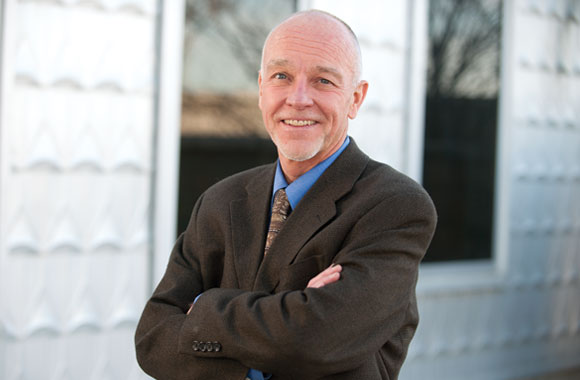
Melding science with patient care
With the UMKC brain tissue bank being one of only a handful in the U.S., researchers at the bank say it fills a vital need, locally and worldwide. The reach of the brain tissue bank is global, serving researchers all over the world. Since the bank first launched, it has supplied tissue to researchers as far away as Israel and Japan. Locally, one of the Greater Kansas City Chamber of Commerce’s Big 5 initiatives includes the goal of making Kansas City a nationally-recognized center for translational research. Thanks to an NIH grant, researchers and clinicians from six regional institutions, including UMKC, will collaborate to create a multidisciplinary network to convert lab discoveries and clinical research into diagnostics, treatments and cures.
“UMKC has a distinct role to play in achieving the region’s goals for translational research—and by that I mean taking innovations from the scientific bench into patient care practices,” says Stuart Munro, M.D., chair of the Department of Psychiatry at UMKC. “The brain tissue bank is a key example of the bridge that UMKC creates between bench science and patient care. Long term, the research supported by brain tissue donations will surely change how we understand, treat, and manage some of the most debilitating medical conditions.”
The brain tissue bank also represents one piece of a marriage Munro says he perceives between the psychiatry department’s various elements: neuroscience, the psychoanalytic institute, suicide prevention, psychology, psychopharmacology and psychiatry. “Bringing together all those disciplines, all of those ways of looking at behavior and emotion, that’s the dream that’s been realized,” he says.
Munro says the profession made a mistake of splitting camps more than 40 years ago. “One group took the purely interpersonal dynamic view and the other took the strictly reductionistic point of view, and they weren’t able to marry the two,” he says. “The people in our department don’t split like that.” Essentially, in the profession, many of the analysts and therapists who offer talk therapy to patients split from the psychiatrists and neurologists, who have focused more on biology and medicine. But Munro says UMKC’s department is different because the disciplines that exist within the field work together.
I think, therefore …
As you read this, your brain’s neurons are communicating via electrical impulses. And when your stomach growls, the message that gets sent to your brain must go through the thalamus, a portion of the brain nestled under the cerebral cortex that works like a post office, delivering incoming sensory messages to the right address in the brain. If too much dopamine is present in the thalamus, a person may suffer from schizophrenia. A lack of dopamine in the brain may lead to Parkinson’s disease. Dopamine’s presence in other parts of the brain may be involved with pain, pleasure and addiction. So how does that one chemical, just by being in a different part of the brain, change things? That’s the secret researchers at the brain tissue bank hope to uncover.
Another bigger question researchers marvel over is the very essence of our consciousness. What makes us aware, able to think and feel and dream? “Nerves talk to each other because of electricity, and every nerve has the potential of about a tenth of a volt,” Carver says. The electrical power comes from chemicals that are electrically charged, such as sodium chloride and potassium. And sodium chloride is salt. So the brain functions by salt that causes electricity in the brain. Then it comes down to the end of that nerve and it dumps out a chemical called a neurotransmitter that causes the next nerve to fire. So how does that change into consciousness and thoughts and dreams and feelings?
The known science about the brain does little to penetrate these mysteries, but researchers at the brain tissue bank hope it will continue to be a resource in the future as scientists seek to answer some of the simplest and the more complex questions about the mind, its diseases and how it works. And none of it is possible without the goodwill of donors, who give up what might be one of their most intimate parts of themselves. “To me, the brain is who we are,” Munro says. “And everything else pales in comparison to that.”
